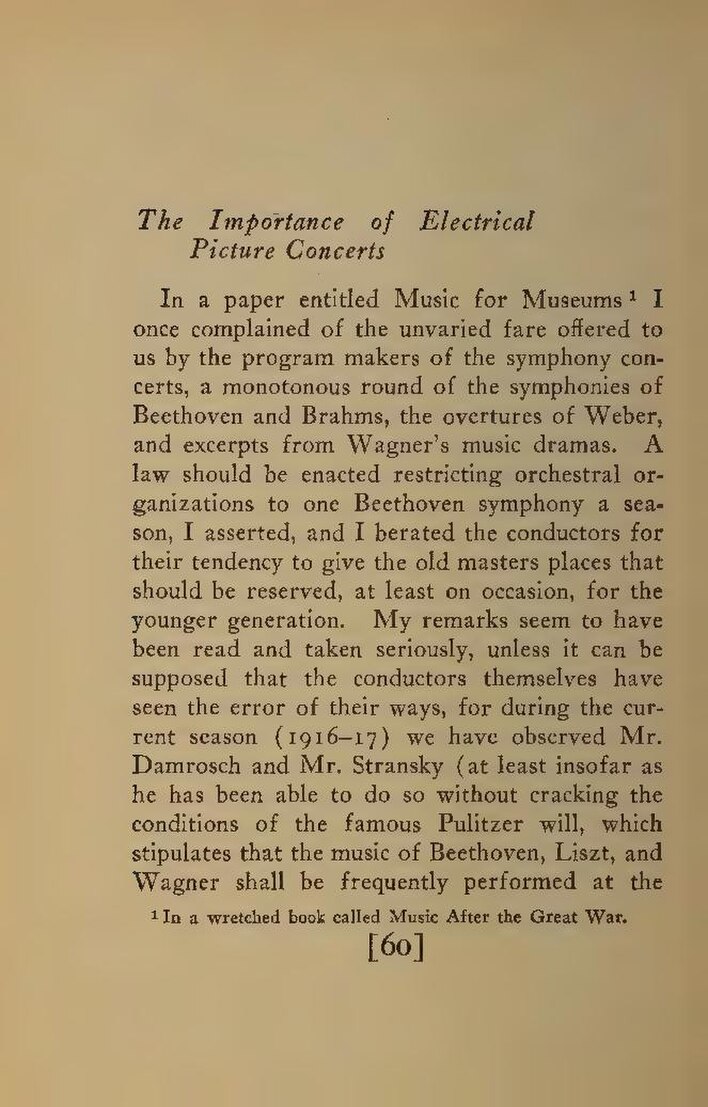In a paper entitled Music for Museums[1] I once complained of the unvaried fare offered to us by the program makers of the symphony concerts, a monotonous round of the symphonies of Beethoven and Brahms, the overtures of Weber, and excerpts from Wagner's music dramas. A law should be enacted restricting orchestral organizations to one Beethoven symphony a season, I asserted, and I berated the conductors for their tendency to give the old masters places that should be reserved, at least on occasion, for the younger generation. My remarks seem to have been read and taken seriously, unless it can be supposed that the conductors themselves have seen the error of their ways, for during the current season (1916–17) we have observed Mr. Damrosch and Mr. Stransky (at least insofar as he has been able to do so without cracking the conditions of the famous Pulitzer will, which stipulates that the music of Beethoven, Liszt, and Wagner shall be frequently performed at the
- ↑ In a wretched book called Music After the Great War.
